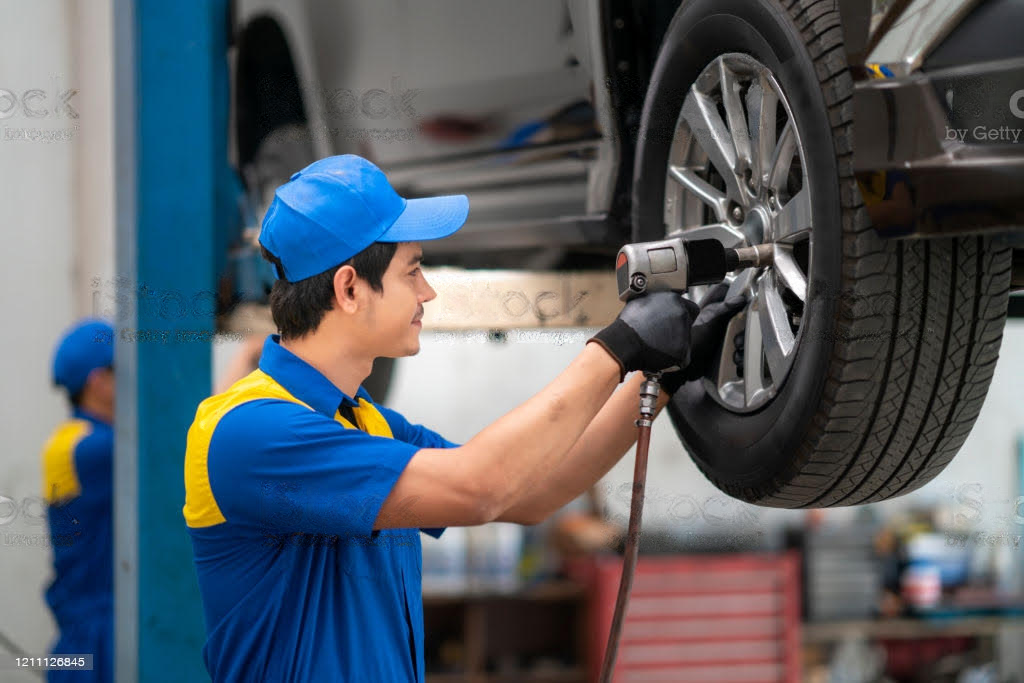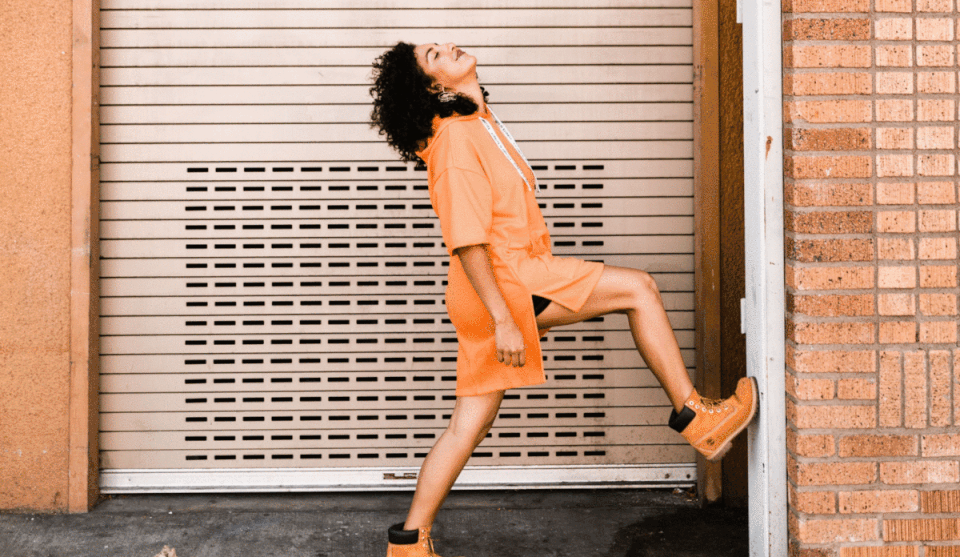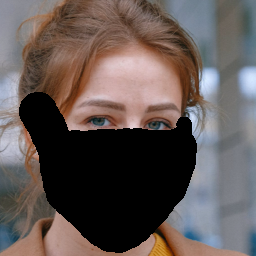large-hole-image-inpainting
Maintainer: fenglinglwb

16

| Property | Value |
|---|---|
| Run this model | Run on Replicate |
| API spec | View on Replicate |
| Github link | View on Github |
| Paper link | View on Arxiv |
Create account to get full access
Model overview
The large-hole-image-inpainting model, developed by fenglinglwb, is a transformer-based model called MAT (Mask-Aware Transformer) that is designed for high-fidelity and diverse large hole image inpainting. It outperforms other state-of-the-art methods like LaMa and CoModGAN on various metrics, including FID, P-IDS, and U-IDS, for both small and large mask scenarios.
Model inputs and outputs
The large-hole-image-inpainting model takes an input image and an optional mask as inputs. The input image must be 512x512 in size, and the mask is also expected to be 512x512, where 0 and 1 values represent the masked and remaining pixels, respectively. If no mask is provided, a random mask will be generated. The model outputs an inpainted image, where the missing regions are filled in with plausible content.
Inputs
- Image: The input image to be inpainted, which must be 512x512 in size.
- Mask: An optional 512x512 mask, where 0 and 1 values represent the masked and remaining pixels, respectively. If not provided, a random mask will be generated.
- Seed: An optional seed value for the random number generator to encourage diverse results. If set to -1, a random seed will be used.
Outputs
- Inpainted Image: The output image with the missing regions filled in with plausible content.
Capabilities
The large-hole-image-inpainting model excels at restoring high-quality and diverse images with large missing regions. Compared to other methods, it produces fewer artifacts and more photo-realistic results, as demonstrated in the provided examples. The model's transformer-based architecture allows it to effectively capture long-range dependencies and holistic image structures, leading to its strong performance on large hole inpainting tasks.
What can I use it for?
The large-hole-image-inpainting model can be useful in a variety of applications, such as:
- Restoring old or damaged photographs by filling in missing regions
- Removing unwanted objects or people from images
- Completing partial or corrupted images
- Enabling creative photo editing and manipulation
By leveraging the model's ability to generate plausible content for large missing areas, you can explore various use cases in the fields of image editing, restoration, and creative content generation.
Things to try
One interesting aspect of the large-hole-image-inpainting model is its ability to generate diverse and pluralistic results. By adjusting the seed value, you can encourage the model to produce different inpainted versions of the same input, each with its own unique characteristics. This can be useful for exploring various creative possibilities or generating multiple options for a particular task.
Additionally, you can experiment with different mask sizes and placements to observe how the model handles varying levels of missing information. This can provide insights into the model's strengths and limitations, and help you better understand its capabilities in different inpainting scenarios.
This summary was produced with help from an AI and may contain inaccuracies - check out the links to read the original source documents!
Related Models

lama

3.0K
The lama model, developed by researcher Roman Suvorov and his team, is a powerful image inpainting system that excels at completing large missing areas in high-resolution images. It is capable of handling complex geometric structures and periodic patterns with impressive fidelity, outperforming previous state-of-the-art methods. Similar models like remove-object and sdxl-outpainting-lora also focus on object removal and image completion, though they may have different architectures or specialized use cases. The lama model stands out for its ability to generalize to much higher resolutions than its training data, making it a versatile tool for a wide range of image restoration tasks. Model inputs and outputs The lama model takes two inputs: an image and a corresponding mask that indicates the region to be inpainted. The output is the completed image with the missing area filled in. Inputs Image**: The input image, which can be of high resolution (up to 2K). Mask**: A binary mask that specifies the region to be inpainted. Outputs Completed image**: The output image with the missing area filled in, preserving the overall structure and details of the original. Capabilities The lama model excels at completing large, complex missing regions in high-resolution images, such as textures, patterns, and geometric structures. It is particularly adept at handling periodic elements, where it can maintain the consistency and coherence of the inpainted area. The model's ability to generalize to much higher resolutions than its training data is a key strength, allowing it to be applied to a wide range of real-world scenarios. This robustness to resolution is a significant advancement over previous inpainting techniques. What can I use it for? The lama model can be used for a variety of image restoration and editing tasks, such as object removal, scene completion, and image enhancement. It could be particularly useful for tasks like photo editing, visual effects, and content creation, where the ability to seamlessly fill in large missing areas is critical. For example, you could use lama to remove unwanted objects or people from a photo, repair damaged or corrupted images, or extend the boundaries of an image to create new compositions. The model's high-quality results and resolution-robustness make it a valuable tool for both professional and amateur image editing workflows. Things to try One interesting aspect of the lama model is its ability to handle periodic structures and textures, such as tiled floors or brickwork. Try experimenting with images that contain these kinds of repetitive patterns and see how the model handles the inpainting. You may be surprised by the level of detail and consistency it can achieve, even in challenging scenarios. Another area to explore is the model's performance on high-resolution images. Try feeding in images at various resolutions, from standard 1080p to 2K or even higher, and observe how the results change. The model's robustness to resolution is a key selling point, so testing its limits can help you understand its capabilities and potential use cases.
Updated Invalid Date

sd-inpaint

2.3K
The sd-inpaint model is a powerful AI tool developed by zf-kbot that allows users to fill in masked parts of images using Stable Diffusion. It is similar to other inpainting models like stable-diffusion-inpainting, stable-diffusion-wip, and flux-dev-inpainting, all of which aim to provide users with the ability to modify and enhance existing images. Model inputs and outputs The sd-inpaint model takes a number of inputs, including the input image, a mask, a prompt, and various settings like the seed, guidance scale, and scheduler. The model then generates one or more output images that fill in the masked areas based on the provided prompt and settings. Inputs Image**: The input image to be inpainted Mask**: The mask that defines the areas to be inpainted Prompt**: The text prompt that guides the inpainting process Seed**: The random seed to use for the image generation Guidance Scale**: The scale for the classifier-free guidance Scheduler**: The scheduler to use for the image generation Outputs Output Images**: One or more images that have been inpainted based on the input prompt and settings Capabilities The sd-inpaint model is capable of generating high-quality inpainted images that seamlessly blend the generated content with the original image. This can be useful for a variety of applications, such as removing unwanted elements from photos, completing partially obscured images, or creating new content within existing images. What can I use it for? The sd-inpaint model can be used for a wide range of creative and practical applications. For example, you could use it to remove unwanted objects from photos, fill in missing portions of an image, or even create new art by generating content within a specified mask. The model's versatility makes it a valuable tool for designers, artists, and content creators who need to modify and enhance existing images. Things to try One interesting thing to try with the sd-inpaint model is to experiment with different prompts and settings to see how they affect the generated output. You could try varying the prompt complexity, adjusting the guidance scale, or using different schedulers to see how these factors influence the inpainting results. Additionally, you could explore using the model in combination with other image processing tools to create more complex and sophisticated image manipulations.
Updated Invalid Date

lama

2
lama is an AI model for image inpainting, developed by twn39 at Replicate. It is a resolution-robust large mask inpainting model that uses Fourier convolutions, as described in the WACV 2022 paper. lama can be compared to similar inpainting models like gfpgan, sdxl-outpainting-lora, supir, sdxl-inpainting, and stable-diffusion-inpainting, all of which aim to fill in masked or corrupted parts of images. Model inputs and outputs lama takes two inputs: an image and a mask. The image is the original image to be inpainted, and the mask specifies which parts of the image should be filled in. The model outputs the inpainted image. Inputs Image**: The original input image to be inpainted Mask**: A mask that specifies which parts of the image should be filled in Outputs Output Image**: The inpainted image with the masked regions filled in Capabilities lama is capable of performing high-quality image inpainting, even on large, irregularly-shaped masks. It can handle a wide range of image content and resolutions, making it a versatile tool for tasks like photo restoration, object removal, and scene completion. What can I use it for? lama can be used for a variety of image editing and restoration tasks. For example, it could be used to remove unwanted objects or people from photos, fill in missing or damaged parts of old photographs, or create new content to complete a scene. It could also be used in creative applications, such as generating new artwork or manipulating existing images in unique ways. With the ability to handle large masks and high resolutions, lama is a powerful tool for professional and hobbyist image editors alike. Things to try One interesting aspect of lama is its ability to handle large, irregularly-shaped masks. This allows users to remove significant portions of an image while maintaining high-quality inpainting results. Experimentation with different mask shapes and sizes can reveal the limits of the model's capabilities and uncover creative new use cases.
Updated Invalid Date

repaint

3
repaint is an AI model for inpainting, or filling in missing parts of an image, using denoising diffusion probabilistic models. It was developed by cjwbw, who has created several other notable AI models like stable-diffusion-v2-inpainting, analog-diffusion, and pastel-mix. The repaint model can fill in missing regions of an image while keeping the known parts harmonized, and can handle a variety of mask shapes and sizes, including extreme cases like every other line or large upscaling. Model inputs and outputs The repaint model takes in an input image, a mask indicating which regions are missing, and a model to use (e.g. CelebA-HQ, ImageNet, Places2). It then generates a new image with the missing regions filled in, while maintaining the integrity of the known parts. The user can also adjust the number of inference steps to control the speed vs. quality tradeoff. Inputs Image**: The input image, which is expected to be aligned for facial images. Mask**: The type of mask to apply to the image, such as random strokes, half the image, or a sparse pattern. Model**: The pre-trained model to use for inpainting, based on the content of the input image. Steps**: The number of denoising steps to perform, which affects the speed and quality of the output. Outputs Mask**: The mask used to generate the output image. Masked Image**: The input image with the mask applied. Inpaint**: The final output image with the missing regions filled in. Capabilities The repaint model can handle a wide variety of inpainting tasks, from filling in random strokes or half an image, to more extreme cases like upscaling an image or inpainting every other line. It is able to generate meaningful and harmonious fillings, incorporating details like expressions, features, and logos into the missing regions. The model outperforms state-of-the-art autoregressive and GAN-based inpainting methods in user studies across multiple datasets and mask types. What can I use it for? The repaint model could be useful for a variety of image editing and content creation tasks, such as: Repairing damaged or corrupted images Removing unwanted elements from photos (e.g. power lines, obstructions) Generating new image content to expand or modify existing images Upscaling low-resolution images while maintaining visual coherence By leveraging the power of denoising diffusion models, repaint can produce high-quality, realistic inpaintings that seamlessly blend with the known parts of the image. Things to try One interesting aspect of the repaint model is its ability to handle extreme inpainting cases, such as filling in every other line of an image or upscaling with a large mask. These challenging scenarios can showcase the model's strengths in generating coherent and meaningful fillings, even when faced with a significant amount of missing information. Another intriguing possibility is to experiment with the number of denoising steps, as this allows the user to balance the speed and quality of the inpainting. Reducing the number of steps can lead to faster inference, but may result in less harmonious fillings, while increasing the steps can improve the visual quality at the cost of longer processing times. Overall, the repaint model represents a powerful tool for image inpainting and manipulation, with the potential to unlock new creative possibilities for artists, designers, and content creators.
Updated Invalid Date